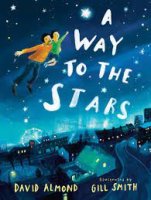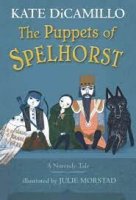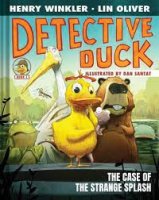This revelatory and gripping nonfiction middle grade book explores a deeply troubling chapter in American history that is still playing out today: the strange case of Prince Edward County, Virginia, the only place in the United States to ever formally deny its citizens a public education, and the students who pushed back.
In 1954, after the passing of Brown v. the Board of Education, the all-White school board of one county in south central Virginia made the decision to close its public schools rather than integrate. Those schools stayed closed for five years.
While the affluent White population of Prince Edward County built a private school—for White children only—Black children and their families had to find other ways to learn. Some Black children were home schooled by unemployed Black teachers. Some traveled thousands of miles away to live with relatives, friends, or even strangers. Some didn’t go to school at all.
But many stood up and became young activists, fighting for one of the rights America claims belongs to all: the right to learn.---from the publisher
288 pages 978-1665901390 Ages 10-14
Keywords: prejudice and racism, African American and Black nonfiction, American history, schools, education, civil rights, human rights, social justice, social issues, social activists,10 year old, 11 year old, 12 year old, 13 year old, 14 year old
********
“In the decision, issued on May 17, 1954, [US Supreme Court Chief Justice Earl] Warren wrote that ‘in the field of public education the doctrine of “separate but equal” has no place,’ as segregated schools are ‘inherently unequal.’ As a result, the Court ruled that the plaintiffs were being ‘deprived of the equal protection of the laws guaranteed by the 14th Amendment.’”
– from Brown v. Board of Education (History.com)
“What did you learn in school today
Dear little boy of mine?
What did you learn in school today
Dear little boy of mine?
I learned our Government must be strong;
It's always right and never wrong;
Our leaders are the finest men
And we elect them again and again”
– Tom Paxton (1963)
“When September came, Shirley and her brother and sisters left their house in a good mood, excited to head back to Mary E. Branch Elementary School No. 1. Who would be in their classes? Were there any new teachers this year? They talked and joked and laughed as they walked down the street. But when they got close to the school, they stopped. Where were all the other kids? Why wasn’t the schoolyard filled with children lining up and teachers giving them instructions? They saw only a handful of their schoolmates. Worried, they went to the door and found heavy chains around the handles and a big black lock holding them tight. A small number of teachers with sad, serious faces came over. There would be no school that day, they said. The school was closed and would stay that way.
The children started back the way they’d come, but there was no laughing or joking now. Shirley started crying and couldn’t stop. She was supposed to be in second grade. Her sisters cried with her. Their school was chained shut like an old, abandoned building. They felt abandoned too. What were they supposed to do? They needed to go to school. ‘No one could explain the situation to help it make sense,’ Shirley said years later.
Most Black families had heard the news of the school closings when officials had announced it in June. They’d gone to meetings to discuss it. Some parents tried to talk to their children about it, but many very young children couldn’t believe it or didn’t understand. Other parents kept quiet, hoping that the county would back down or that the state or federal government would step in during the summer. Surely the county couldn’t really shut all the schools. Could it?
Just imagine you or your kid being one of those Black children who were shut out of school because the Board of Supervisors of Prince Edward County, Virginia refused to abide by the Brown v Board of Education decision mandating school integration.
Being forced to give up your seat on a bus is humiliating. Separate bathrooms and being refused service leaves scars. But depriving kids of an education is about the worst thing you can do to them.
How did this all come to pass? In a notable piece of nonfiction that is perfect for tweens (one more book that will surely be challenged by Florida’s white supremacist state government), former history teacher Patty O'Connell Pearson begins with a foundational overview of American Black history. The author guides readers through events from colonial slavery through the Civil War, Reconstruction, and the sham of separate-but-equal. Then she gets down to business, delving into the horrendous conditions that existed for Black kids after WWII at segregated R.R. Moton High School in Farmville, Virginia.
It was there where a student named Barbara Johns organized a student strike to protest those disgusting conditions the County’s Black students were subjected to as they were trying to learn. Barbara was inspired by her outspoken uncle who was then the pastor of the now-famous Dexter Avenue Baptist Church in Montgomery Alabama. (Think MLK).
Thanks to Barbara Johns and other student leaders who stepped up, the student strike was so successful that the NAACP agreed to sue Prince Edward County. But rather than merely fight for better conditions, the suit sought an end to segregated schools in America. And this is how Barbara Johns’s standing up led to their fight becoming part of the US Supreme Court’s Brown v Board of Education decision.
But those in power in Prince Edward County didn’t care what the Supreme Court ruled.
For five years (1954-1959), the County’s white supremacist Board of Supervisors simply ignored the mandates of the Brown decision and maintained the status quo. Then the Board reacted to a subsequent court ruling, mandating desegregation by September 1959, by refusing to fund the County’s public schools at all. In place of public schools, the County’s white students began the new school year attending a “private” school founded by white supremacists and funded by state tuition grants, private donations, and supplies stolen from the public schools.
For the next five years, the County’s public schools were shut down and thousands of Black kids were shut out of school.
The author shares stories of some Black students who were taken in by white and Black families outside of Prince Edward County so that they could go to school. But a solid majority of the County’s Black students spent FIVE YEARS not getting to go to school at all because of the hate and prejudice.
“Outside of Africa, south of the Sahara, where education is still a difficult challenge, the only places on earth known not to provide free public education are Communist China, North Vietnam, Sarawak, Singapore, British Honduras, and Prince Edward County, Virginia.”
– US Attorney General Robert F. Kennedy speaking at Kentucky’s Centennial of the Emancipation Proclamation, March 18, 1963
In the fall of 1963, with still no public schools nor any subsequent court decision in sight, an effort overseen by JFK and RFK led to so-called free schools opening in the County. On the day preceding their opening day, the infamous bombing in Birmingham, Alabama that killed four Black female Sunday school students took place. (See Christopher Paul Curtis’s Newbery Honor book, THE WATSONS GO TO BIRMINGHAM, 1963.)
Finally, a decade-and-a-half after Barbara Johns’s student activism, the Supreme Court ruled that the County’s hateful actions violated the Fourteenth Amendment of the US Constitution. But, even then, with most of the County’s white students ensconced in their whites-only private school, there were still more years of fighting before the County’s public schools were anywhere near adequately staffed and equipped.
And so it was that a whole generation of the County’s Black students were screwed out of an education. Plenty of them–fellow Boomers who are now parents and grandparents–never even learned to read thanks to the hatred of those white supremacists.
Those who say, “Get over it. Everything is equal now,” are lying to themselves and to you. As any well-read American knows, while things are so much better than they were in the 1950s, Blacks in America continue to face discrimination. Voting rights are constantly under attack. Housing discrimination is still rampant. Opportunity in America is still not color blind.
Hopefully, WE ARE YOUR CHILDREN TOO will help inspire a new generation of Black and white students to demand that so-called Christians practice what they preach and treat all young (and old) Americans in a manner that they, themselves, would want to be treated.
Until then, our fight continues.
Recommended by: Richie Partington, MLIS, California USA
See more of Richie's Picks






